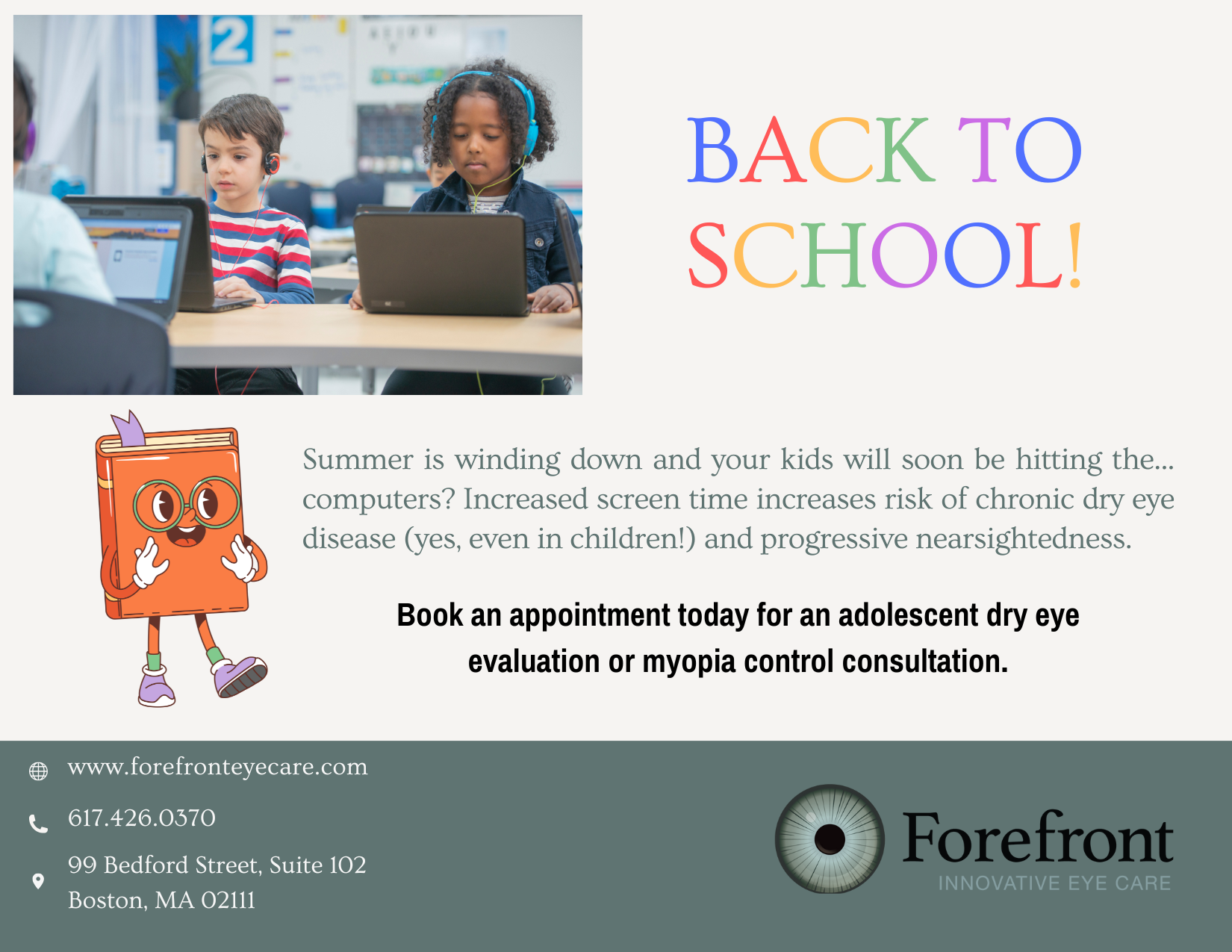
Dry eye disease is a common yet often misunderstood condition that affects millions of people. It occurs when the eyes do not produce enough tears or when the quality of tears is insufficient to keep the ocular surface healthy. Left untreated, dry eye can lead to discomfort, blurred vision, and even long-term damage to the eye's surface. At Forefront Eye Care, we take a comprehensive approach to diagnosing and managing dry eye with customized optical management plans that go beyond symptom relief to target the root cause of the condition.
Understanding Dry Eye
Dry eye can generally be categorized into two main types:
Evaporative Dry Eye – Caused by Meibomian Gland Dysfunction (MGD), where the glands responsible for oil production in tears become blocked or ineffective, leading to excessive tear evaporation.
Aqueous Deficient Dry Eye – Occurs when the lacrimal glands fail to produce enough tears to properly lubricate the eyes.
Many patients experience a combination of both types, which is why proper diagnosis is essential to determining the best course of treatment.
Step One: Comprehensive Dry Eye Diagnosis
A precise diagnosis is the foundation of an effective treatment plan. We use advanced diagnostic tools to assess the root cause of dry eye, including:
Meibography – Imaging technology that evaluates the structure and function of the Meibomian glands.
LipiView Ocular Surface Interferometer – Measures the lipid layer of the tear film and determines blink patterns to assess tear stability.
Meibomian Gland Evaluator – Assesses the function and secretion quality of the Meibomian glands.
Korb-Blackie Light Test – Identifies tear film deficiencies by evaluating how light interacts with the eye’s surface.
Tear Chemistry Analysis – Determines tear osmolarity and inflammation markers to detect tear film instability and inflammation.
Lifestyle contributors – Recent studies show that our lifestyle choices contribute significantly to dry eye disease, and not addressing them can result in treatment failure. Our doctors will investigate elements of diet, sleep, screen time, cosmetic use, exercise, and facial rejuvenation which can all affect your dry eye management plan.
Once the underlying cause is identified, we move forward with a personalized treatment plan tailored to the specific needs of each patient.
Step Two: Personalized Treatment and Management Options
Because no two cases of dry eye are exactly alike, a one-size-fits-all treatment approach is rarely effective. Instead, our customized optical management plans may include a combination of the following:
Custom Moisture Chamber Spectacles – Specialized eyewear that helps retain moisture and reduce tear evaporation.
BlephEx – An in-office deep cleaning procedure that removes bacterial biofilm and debris from the eyelids, improving overall eye health.
ZEST (Zocular Eyelid System Treatment) – A deep eyelid cleansing treatment that targets demodex mites and other debris contributing to dry eye symptoms.
RegenerEyes Serum and Amniotic Fluid Drops – Biologic eye drops that help promote healing and reduce inflammation for severe dry eye cases.
Amniotic Membrane Bandage Contact Lenses – Specialized lenses that promote corneal healing and provide protection for those with advanced ocular surface disease.
Punctal Plugs – Tiny devices inserted into the tear ducts to help retain natural tears on the ocular surface for longer periods.
Scleral Lenses – Large-diameter gas-permeable contact lenses that vault over the cornea and create a protective reservoir of fluid, providing continuous hydration and relief for moderate to severe dry eye sufferers.
IPL (Intense Pulsed Light Therapy) – A treatment that reduces inflammation and targets abnormal blood vessels contributing to meibomian gland dysfunction.
TearCare – A wearable device that delivers targeted heat therapy to unblock Meibomian glands and restore natural tear production.
LipiFlow Thermal Pulsation Therapy – A combination of heat and gentle massage applied directly to the eyelids to clear blockages in the Meibomian glands and improve oil secretion.
By addressing the root cause and providing targeted treatments, we aim to improve comfort and long-term eye health rather than simply masking symptoms.
Step Three: Ongoing Monitoring and Long-Term Care
Dry eye management does not stop with treatment. Ongoing monitoring and adjustments to the management plan are necessary to ensure long-term relief and prevent recurrence. Regular follow-ups allow us to assess treatment efficacy and make any necessary modifications to optimize results.
Take the First Step Toward Effective Dry Eye Relief
At Forefront Eye Care, we understand that dry eye is a complex condition that requires a customized approach. By leveraging advanced diagnostics, personalized treatments, and ongoing care, we go beyond symptom relief to provide lasting solutions tailored to each patient’s needs.
If you are struggling with dry eye symptoms, schedule a comprehensive dry eye evaluation with Forefront Eye Care and take the first step toward long-term relief. Visit our office in Boston, Massachusetts, or call (617) 322-0534 to book an appointment today.










